“Kimchi, also spelled gimchi, kimchee, or kim chee, is a traditional fermented Korean dish made of vegetables with varied seasonings. There are hundreds of varieties of kimchi made with a main vegetable ingredient such as napa cabbage, radish, green onions or cucumber. It is the most common banchan, or side dish, in Korean cuisine. Kimchi is also a main ingredient for many popular Korean dishes such as kimchi stew (김치찌개; kimchi jjigae), kimchi soup (김칫국; kimchiguk), and kimchi fried rice (김치볶음밥; kimchi bokkeumbap).
The oldest references to kimchi can be found from 2600 to 3000 years ago. The first text-written evidence of its existence can be found in the first Chinese poetry book, Shi Jing (詩經). In this book, kimchi was referred to as jeo (菹). The term ji was used until the pre-modern terms chimchae (hanja: 沈菜, lit. soaked vegetables), dimchae, and timchae were adopted in the period of the Three Kingdoms of Korea. The word then was modified into jimchi, and is currently kimchi.
Early kimchi was made of cabbage and beef stock only. Red chili, a New World vegetable not found in Korea before European contact with the Americas, was introduced to Korea from Japan after the Hideyoshi Invasions (1592–1598) and became a staple ingredient in kimchi. Red chili pepper flakes are now used as the main ingredient for spice and source of heat for many varieties of kimchi. In the twelfth century other spices, creating flavors such as sweet and sour, and colors, such as white and orange, were added.
Kimchi varieties are determined by the main vegetable ingredients and the mix of seasonings used to flavor the kimchi. The most popular type of kimchi is the baechu (napa cabbage, a long white-colored cabbage) variety, although there are many regional and seasonal varieties.
The Kimchi Field Museum in Seoul has documented 187 historic and current varieties of kimchi. Although the most common seasonings include brine, scallions and spices, ingredients can be replaced or added depending on the type of kimchi being made. Common seasonings also include ginger, chopped radish, garlic, saeujeot (hangul: 새우젓), and aekjeot (hangul: 액젓, fish sauce)”. – Wikipedia
Photos: South Korean housewives, among more than two thousand who gathered for an event sponsored by state officials to help the needy, make kimchi, the traditional pungent vegetable dish on the grounds in front of Seoul City Hall on November 20 in Seoul, South Korea. (Photo by Chung Sung-Jun/Getty Images)
The oldest references to kimchi can be found from 2600 to 3000 years ago. The first text-written evidence of its existence can be found in the first Chinese poetry book, Shi Jing (詩經). In this book, kimchi was referred to as jeo (菹). The term ji was used until the pre-modern terms chimchae (hanja: 沈菜, lit. soaked vegetables), dimchae, and timchae were adopted in the period of the Three Kingdoms of Korea. The word then was modified into jimchi, and is currently kimchi.
Early kimchi was made of cabbage and beef stock only. Red chili, a New World vegetable not found in Korea before European contact with the Americas, was introduced to Korea from Japan after the Hideyoshi Invasions (1592–1598) and became a staple ingredient in kimchi. Red chili pepper flakes are now used as the main ingredient for spice and source of heat for many varieties of kimchi. In the twelfth century other spices, creating flavors such as sweet and sour, and colors, such as white and orange, were added.
Kimchi varieties are determined by the main vegetable ingredients and the mix of seasonings used to flavor the kimchi. The most popular type of kimchi is the baechu (napa cabbage, a long white-colored cabbage) variety, although there are many regional and seasonal varieties.
The Kimchi Field Museum in Seoul has documented 187 historic and current varieties of kimchi. Although the most common seasonings include brine, scallions and spices, ingredients can be replaced or added depending on the type of kimchi being made. Common seasonings also include ginger, chopped radish, garlic, saeujeot (hangul: 새우젓), and aekjeot (hangul: 액젓, fish sauce)”. – Wikipedia
Photos: South Korean housewives, among more than two thousand who gathered for an event sponsored by state officials to help the needy, make kimchi, the traditional pungent vegetable dish on the grounds in front of Seoul City Hall on November 20 in Seoul, South Korea. (Photo by Chung Sung-Jun/Getty Images)
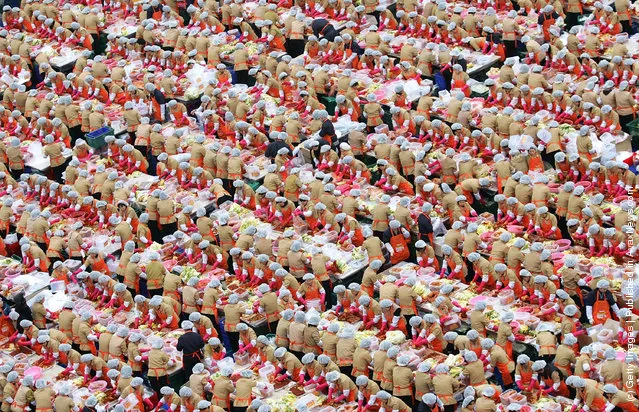
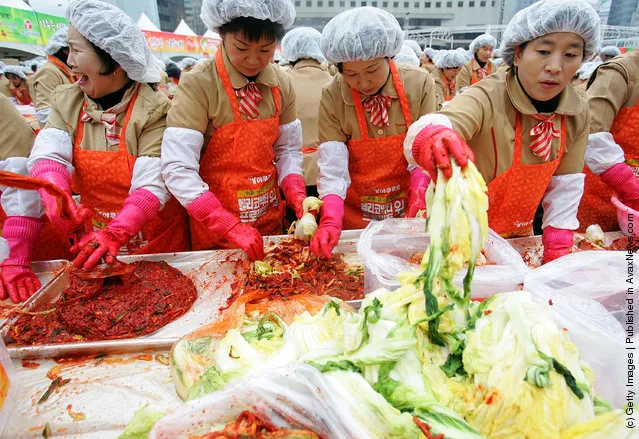
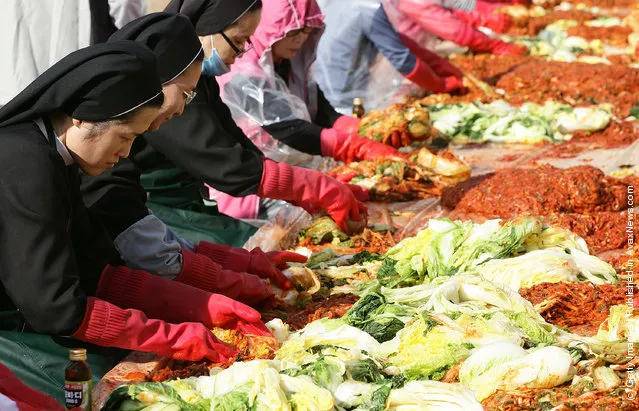
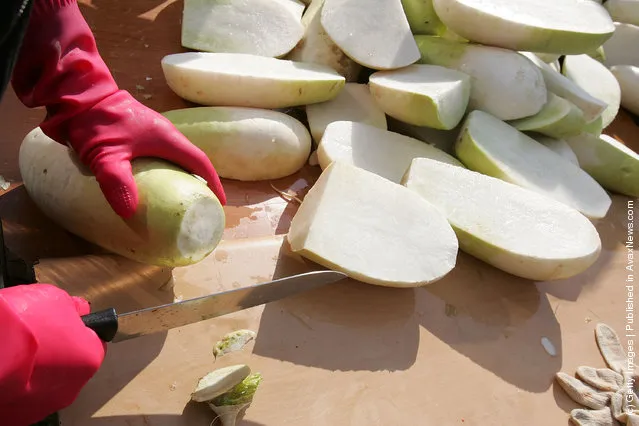
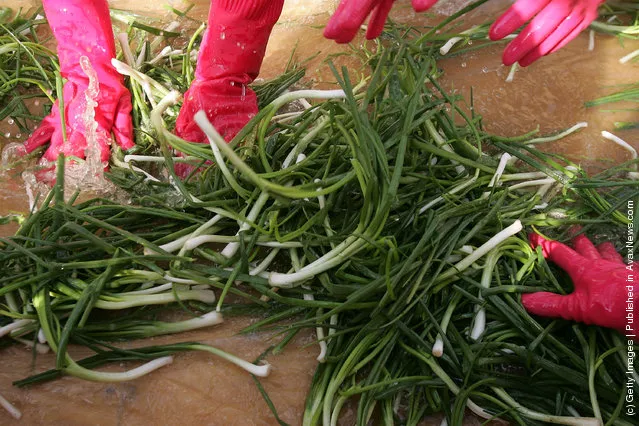
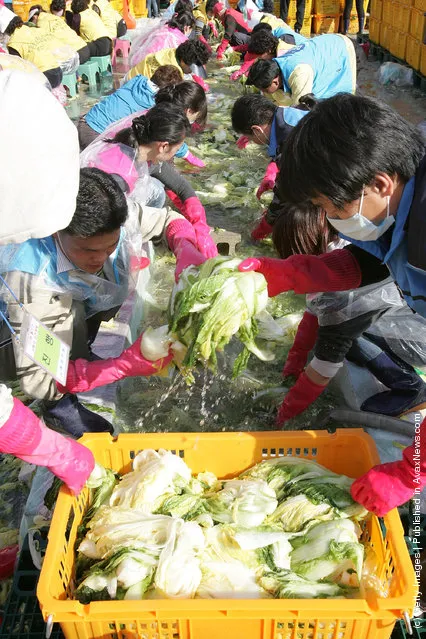
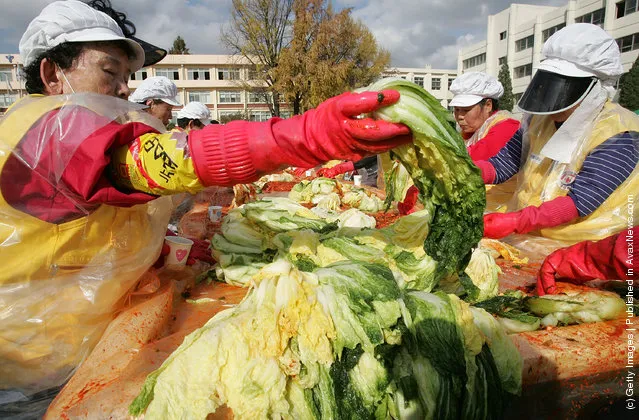
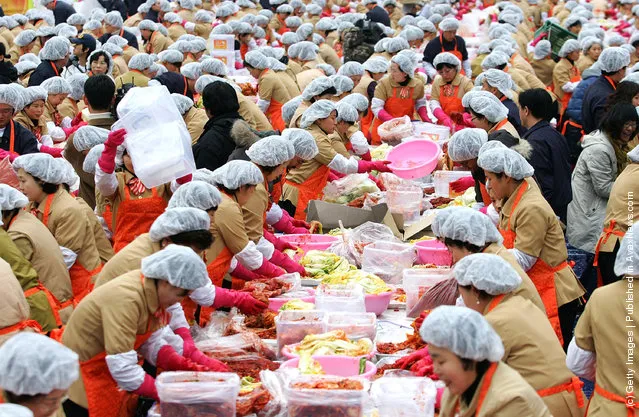
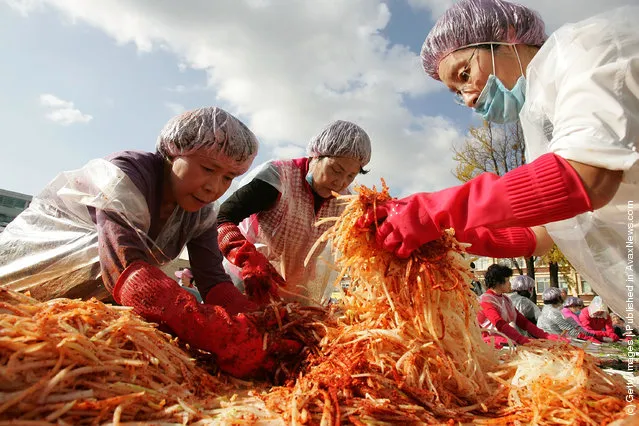
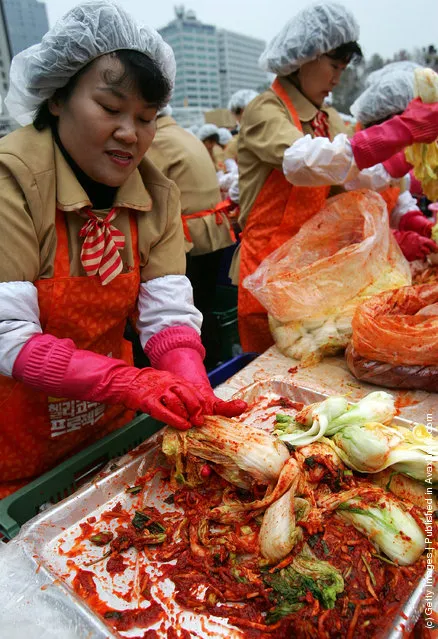
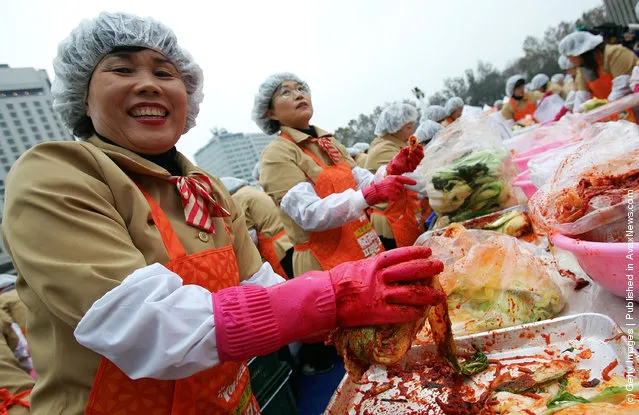
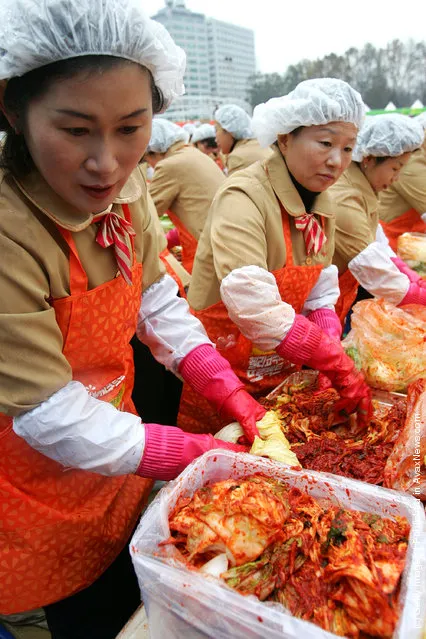
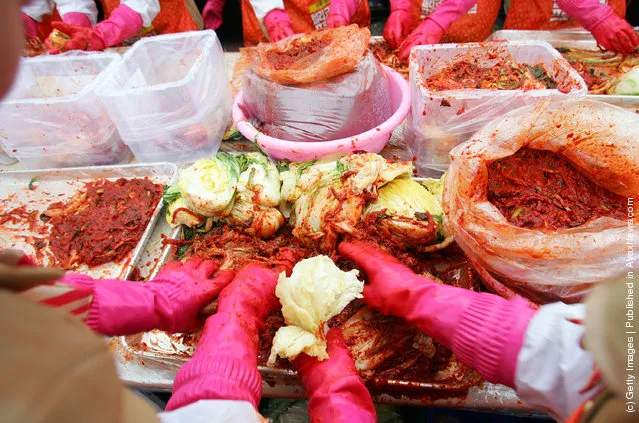
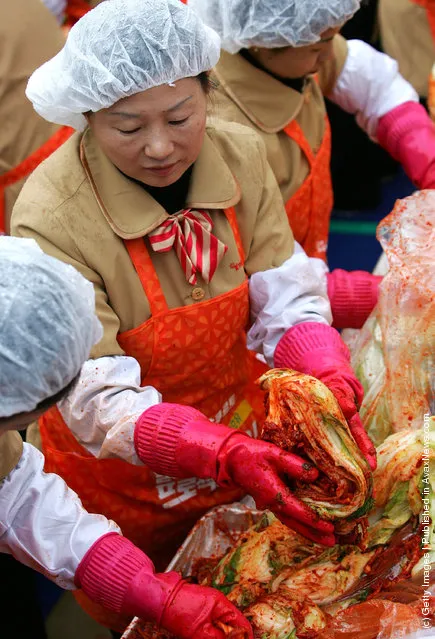
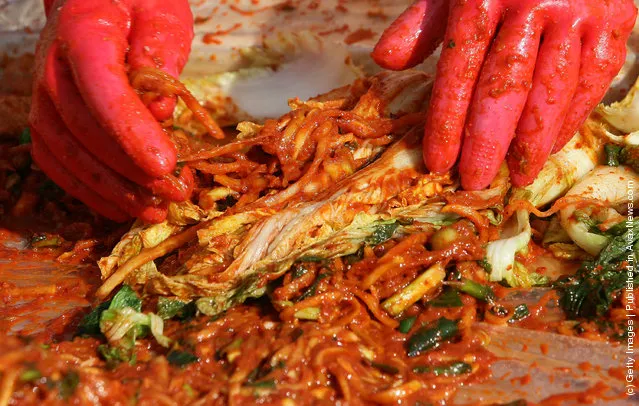
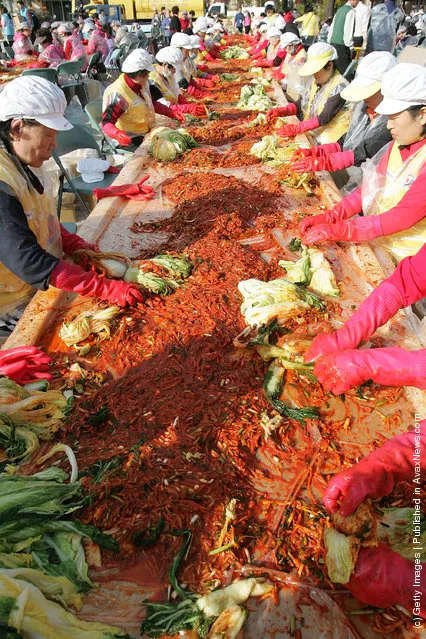
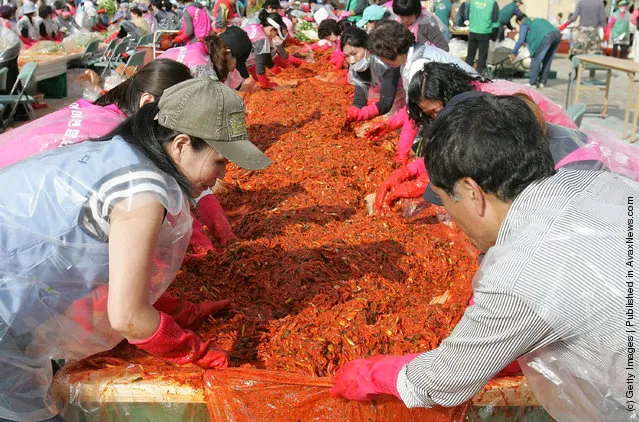
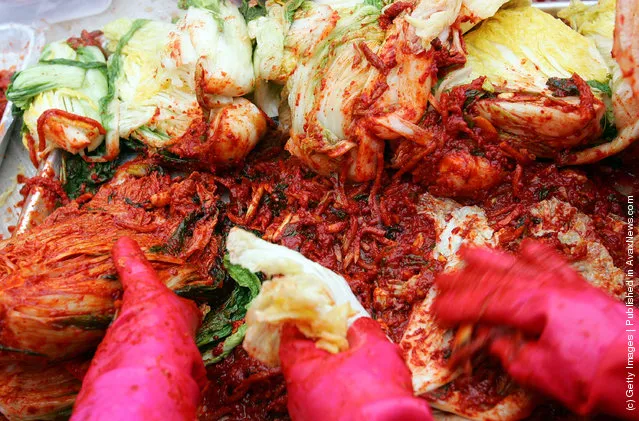
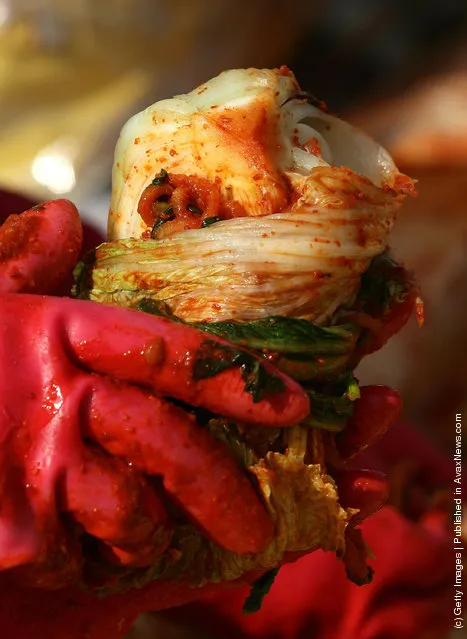
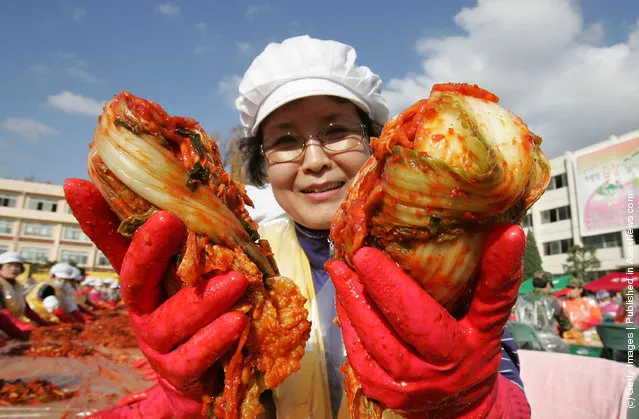

21 Dec 2011 13:24:00,
post received
0 comments
